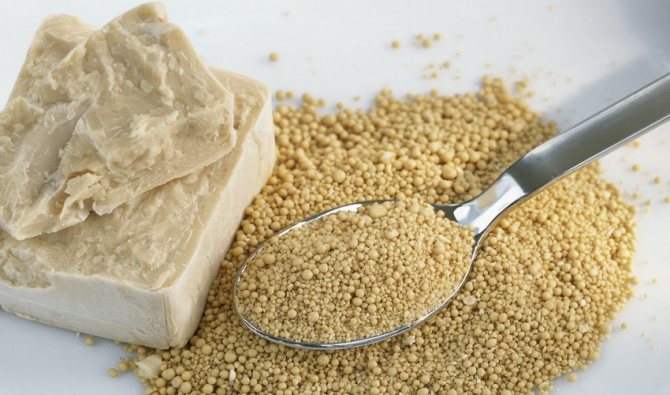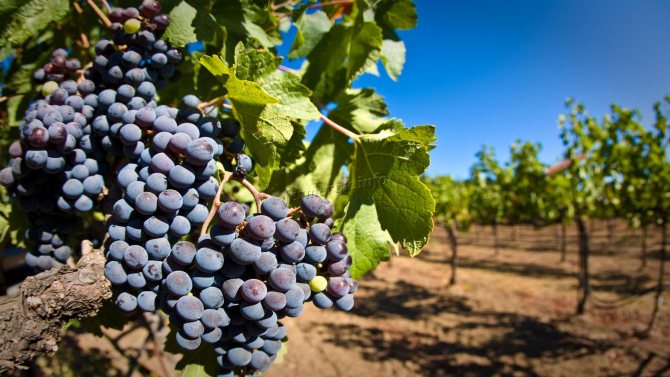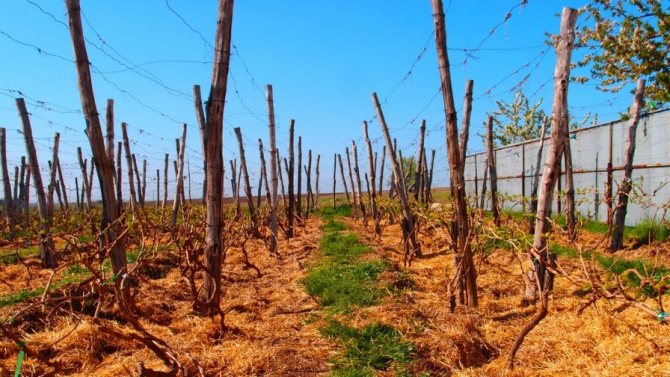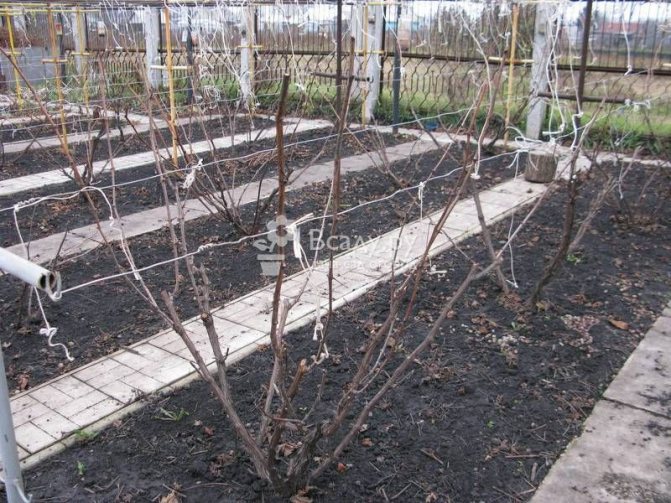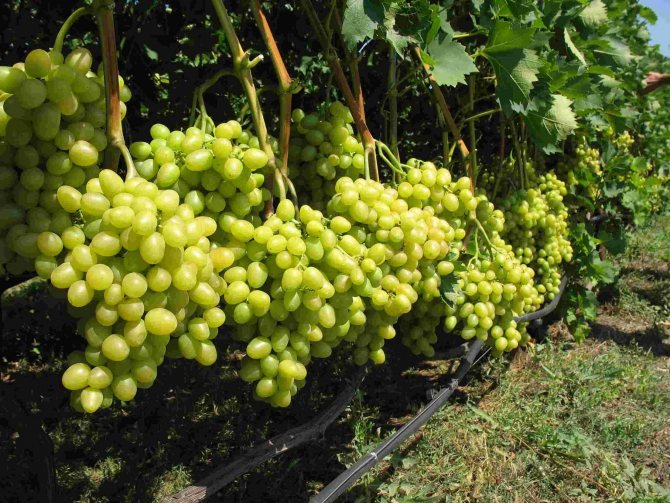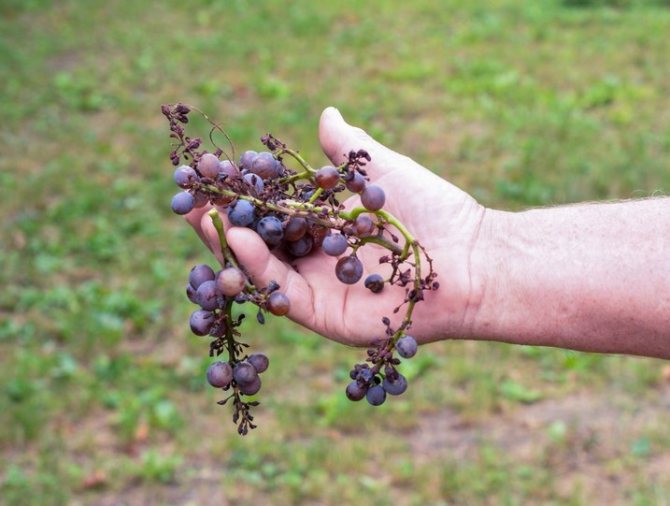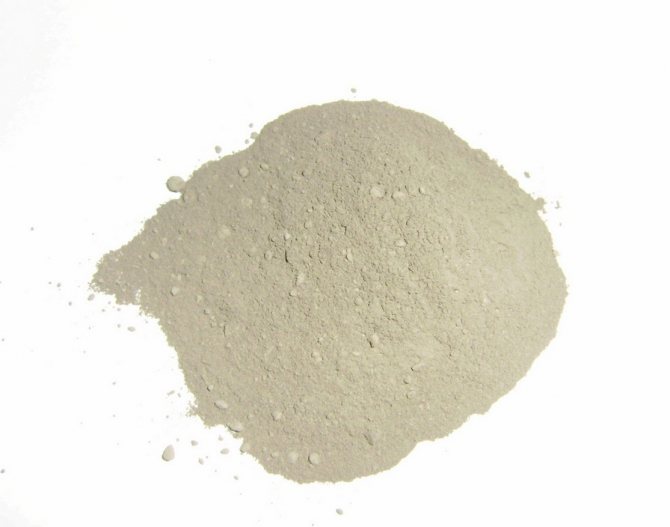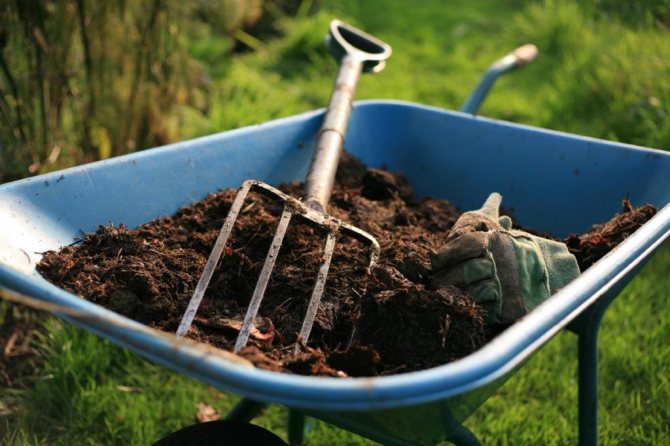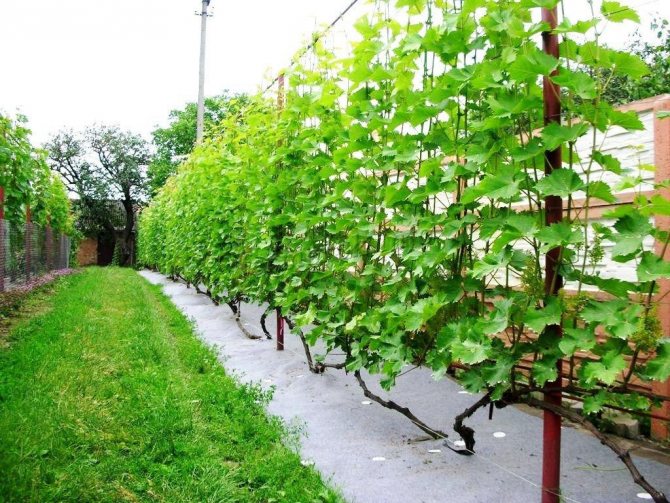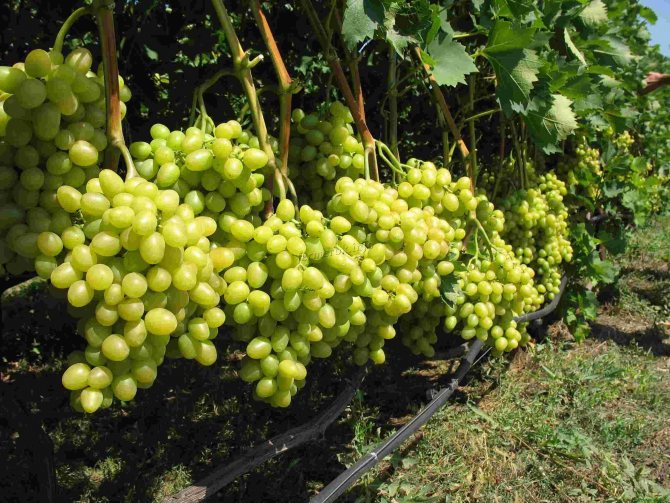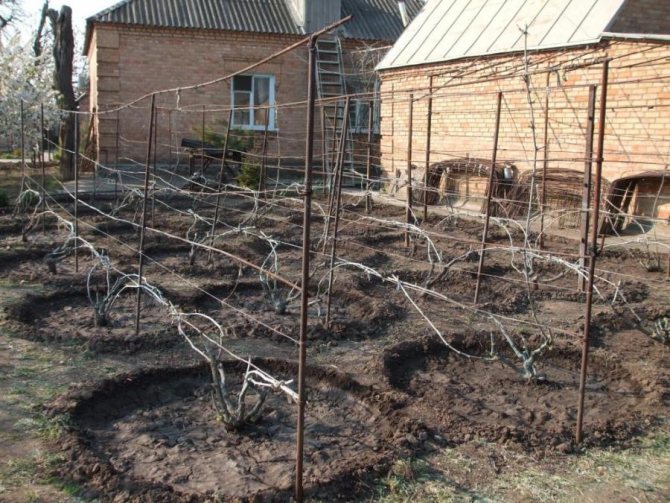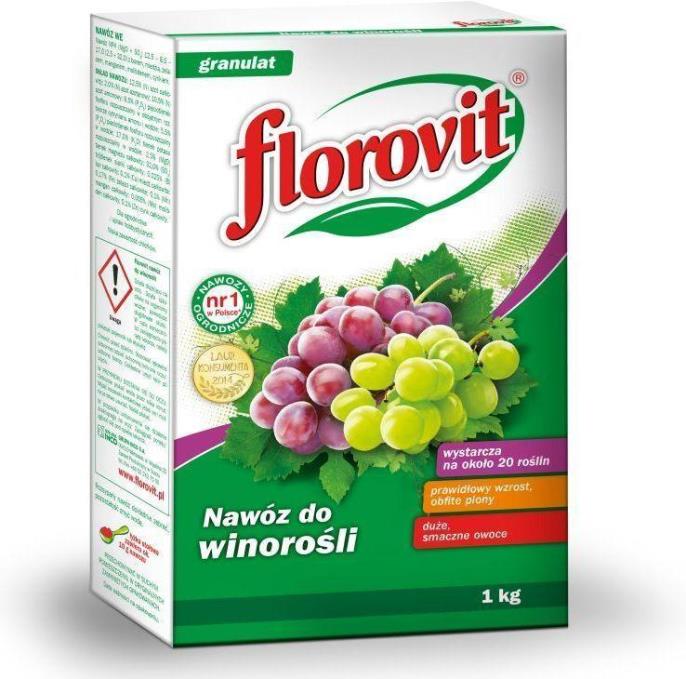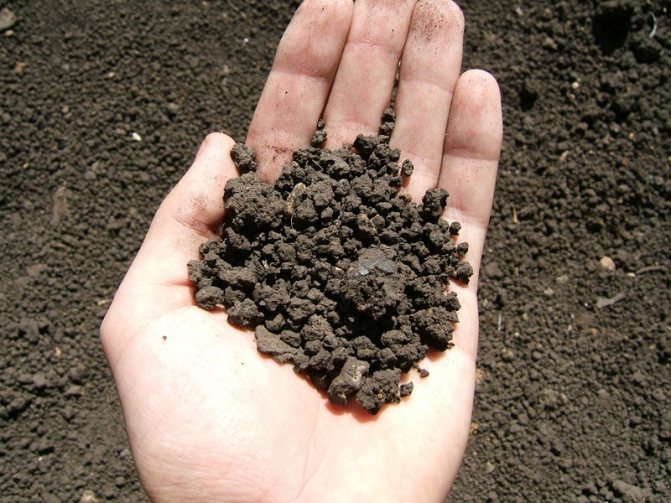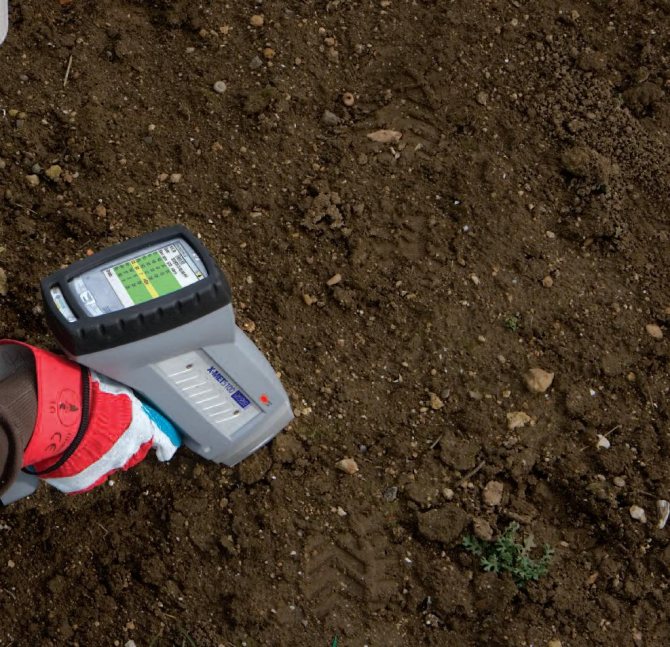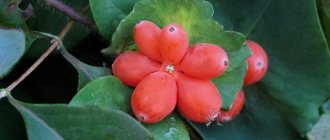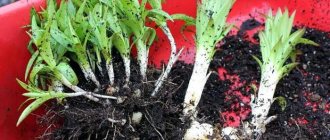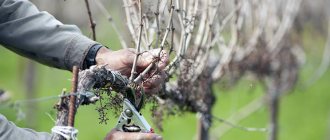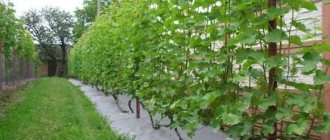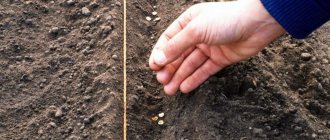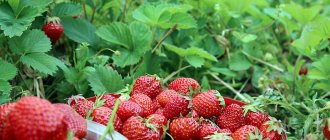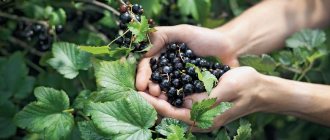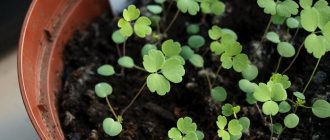The grapes are grown by many owners of summer cottages and household plots. This is an excellent decorative element and, in addition, a harvest of delicious berries (or vice versa, depending on preference). In any case, for active growth and fruiting, grapes need fertilizers. It is noteworthy that it is necessary to start making them only two years after planting. With the onset of autumn, it is important not to miss these works, so that in the next season the grapes will delight with long vines and numerous bunches of berries. Let's figure out what and how to do.
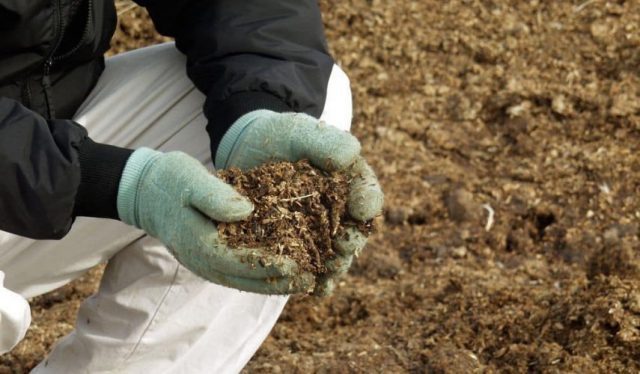
Fertilizing grapes in autumn
During growth and ripening, grapes take a lot of nutrients from the soil. Autumn is the best time to make up for losses and strengthen the plant before the attacks of winter cold. In autumn, grapes need potassium, phosphorus, magnesium, zinc. The complex will help boost immunity.
Organic matter will not be superfluous in the fall. Fertilizers are applied in two approaches. Even three - at the very beginning of September, to accelerate the ripening of berries, they are sprayed with potassium monophosphate dissolved in water according to the instructions. Then comes the turn of organics, and then - complex mineral compositions.
Why do you need top dressing in the fall
In one season, 5 dressings are made under the grape bushes. The last one is autumn. It is not always necessary. Fertile chernozem soils are depleted slowly - autumn cultivation is carried out every 3 years. Light sandy loam and sandy soils need annual preparation for winter.
Fertilization of grapes in the fall is necessary for its normal wintering. If there are enough minerals and organics in the soil, the plant will tolerate frosts well, it will be able to bloom and set fruits in spring. Root feeding involves the introduction of nutrients into the soil, foliar - spraying plants. The last foliar dressing is applied 2-3 days before harvest.
Preparation for winter includes 2 stages: feeding and mulching. Mulching protects the root system from cold weather, the soil from washing away.
Mineral fertilizers for grapes
The end of October is the time for potash and phosphate fertilizers. You can deposit in two ways. The required amount of granules is scattered over the surface of the earth, after which they begin to dig, then thoroughly watered (in the fall, rains can do this for you).
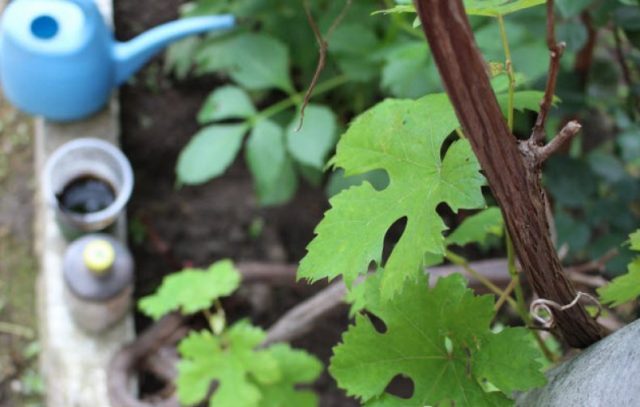

Mineral fertilizers for grapes
The second option is to dissolve the fertilizer in water and then water the grapes with the ready-made composition as close as possible to the plant trunks. Experienced gardeners suggest making a deepening of 30 centimeters at a small radius from the trunk and pouring the solution there. It is believed that this method gives the roots easy access to nutrients.
Typical mistakes gardeners
Novice growers often make mistakes when applying fall fertilizer for grapes. The most typical:
- feed young seedlings, not adult plants;
- make only complex preparations;
- bring in an increased amount of nutrients.
Grape bushes 1-2 years old do not need additional feeding in the fall: the vines do not bear fruit or give them a minimum amount. Plants have enough soil minerals, they do not have time to deplete it. Active mature bushes quickly take nutrients from the soil.
Complex preparations contain a standard set of minerals: nitrogen, phosphorus, potassium.The grape culture needs these elements, but apart from them magnesium, zinc, boron, sulfur, calcium are required, which are absent in conventional complexes.
An excess of fertilizing and its random introduction into the soil leads to root burns, a decrease in plant immunity. Fertilizing the grape crop is recommended according to a strict scheme.
Autumn feeding of grapes with ash
If you regularly apply fertilizer, did it in the spring, the soil is most likely not yet depleted, so the time for heavy artillery has not come. It will be enough to feed the grapes with ordinary ash. Bring in the product when digging (sprinkle the soil on top and work with a shovel). You can choose the option with watering. Dissolve 0.3 kg of ash in 10 liters of water - this volume is enough for one bush.
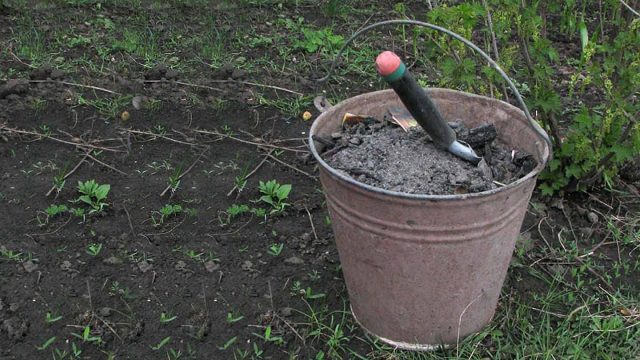

Top dressing of grapes with ash
What is the plus of ash? The fertilizer contains all the necessary elements, just in less significant quantities. A big plus of ash is a significant decrease in soil acidity. Fertilized plants ignore harmful insects.
How the culture is fed
Various minerals have an impact on the vital functions of grape bushes. Nitrogen stimulates the growth of green parts of the plant. Phosphorus provides a healthy and abundant flowering and fruit setting. Without magnesium, photosynthesis and protein formation do not occur. Zinc increases the abundance of fruiting, and boron accelerates the ripening of fruits, affects their weight and taste. Potassium increases resistance to frost and temperature extremes.
Grapes require less nitrogen than other horticultural crops. Other elements are much more important for the plant.
Root and foliar feeding is carried out with minerals throughout the year. Organic matter is applied less often when there is a need to improve the structure and fertility of the soil.
Mineral dressing
Before wintering, grape bushes must be treated with phosphorus and potassium dressings. You can use a complex preparation, which also includes magnesium, zinc and sulfur. The top dressing should not contain chloride ions: the plant does not tolerate chlorine ions.
Autumn feeding of grapes in winter is carried out with chemicals in the following proportions:
- 10 g of potassium salt;
- 20 g of superphosphate granules;
- 2 g zinc sulfate;
- 2 g of manganese sulfate;
- 1 g boric acid;
- 1 g of potassium iodide.
This composition fully provides the plant with nutrition. A large amount of potassium prepares the vines for the cold weather. Superphosphate treatment guarantees a rich harvest.
Organic feed
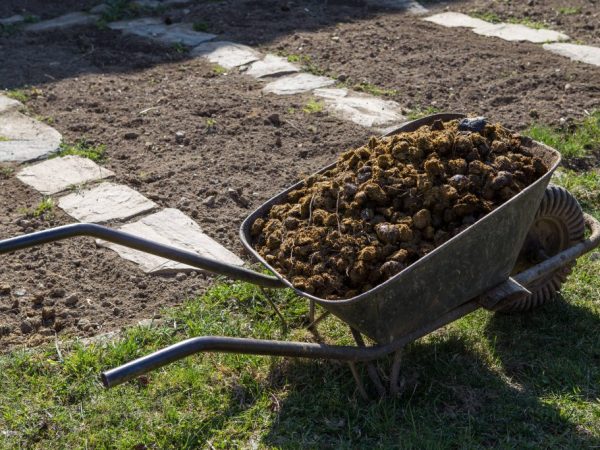

Organic fertilizers should be used with caution
Organic matter affects the composition of the soil, increases overall fertility. When feeding grapes with organic matter, it is recommended to strictly follow the rules so as not to harm the bushes.
How to feed grapes in autumn:
- for 1 sq. m. of soil is applied 2 kg of manure in dry or liquid form;
- for 1 sq. m. soil 1 kg of bird droppings is dissolved in 1 liter.
Only rotted manure and droppings are used. Fresh biomaterials harm the plant in the autumn. The droppings are applied only in dissolved form to avoid root burns.
Ash feeding
Wood ash is rich in phosphorus, calcium, and magnesium in a form readily available to plants. The substrate is alkaline and is used to stabilize the pH of acidic soils. Also, there is no chlorine in the ash, which the grape culture does not like.
Ash improves the composition of the soil, creates a healthy microflora. The effect of feeding lasts 3-4 years. Ash is introduced in the form of an aqueous solution - 30 g per 10 liters of water under one bush. The plant is fed in wet weather after watering.
Ash must not be combined with manure, droppings, ammonium sulfate. It is not recommended to prepare mixtures of ash with superphosphate, phosphorus from such a mixture is poorly absorbed by the plant.
Ash is stored in dry, well-ventilated rooms.The product quickly absorbs moisture and becomes unsuitable for gardening work.
Fertilizing the vineyard after harvest
We recommend reading our other articles
- Ovoscope for checking eggs
- Temperature conditions for incubating quail eggs at home
- How to deal with potato ring rot
- Apple jam for the winter
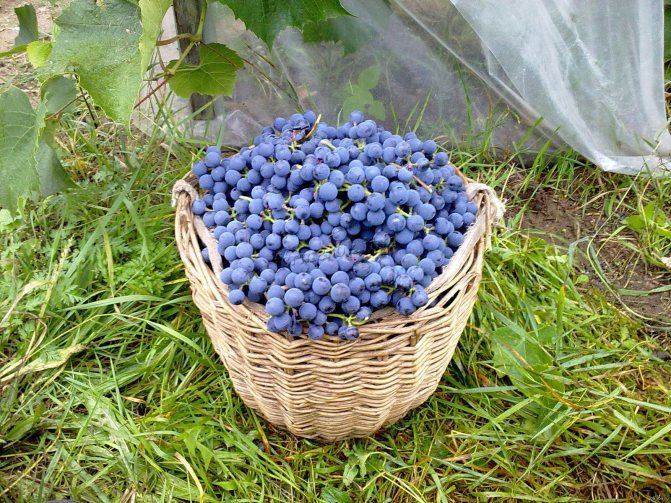

Grape harvest
After harvesting, the grapes need rest and restoration. How can we support culture in this crucial period so that it gains strength and prepare for future winter frosts? The main method is timely care and feeding. But how to feed the grapes after harvest and how to do it? The easiest way to reinforce grapes after fruiting is to mulch the soil around them. It is not difficult, it takes a minimum of time, but the benefits are enormous.
Since autumn frosts can be unpredictable, it is not recommended to apply liquid fertilizing from the second month of autumn (so that the roots do not freeze). But it is at this time that the grapes usually give up their last harvest. Mulching is a simple and safe method of fertilizing a vineyard in the fall. The mulch slowly nourishes the roots and at the same time protects them from severe frost. You can use humus, compost or peat as mulch.
Feeding scheme
A common mistake made by winegrowers is to combine top dressing with watering (fertilize the soil and immediately water it), as well as laying mineral fertilizers in the surface layers of the soil.
If fertilizers are laid high, the bushes will develop only the upper roots, which are most vulnerable to cold weather, and the strong internal roots will be deprived of nutrition. The same happens if you combine fertilization with irrigation.
For effective feeding, trenches with a diameter of 35-75 cm and a depth of 20-35 cm are dug around the bushes for a three-year-old vine, 35-50 cm for older bushes. Mineral fertilizers are laid in the trenches, buried and tamped.
It is recommended to fertilize the soil with organic matter in early autumn. The earth is dug up and mixed with manure or liquid chicken droppings are introduced. Chemical fertilizers or ash are applied 2-3 weeks after organic matter.
Organic autumn fertilizer for grapes
Organics under the bushes are brought along with the obligatory autumn digging of the earth under the bushes. It can be compost or matured manure, chicken droppings are also suitable (consider the smell if the grapes grow near a residential building). Organic fertilizers have a positive effect on soil properties - the composition improves, air permeability increases.
Interesting! If you choose chicken manure, it is best to apply it in liquid form. The composition is prepared simply: the droppings are diluted with plain water in a ratio of 1: 4. The fertilizer is then sent to a warm place. If it's warm outside, they leave it under the sun. After two weeks, the product can be used, previously diluted again with water in a ratio of 1 to 10. Do not overdo it! Half a liter of the mixture is enough for one bush. Excess fertilizer is harmful.
Disease and pest control
If the summer resident is too lazy to spray the grapes in September, the garden can go for the winter in an unhealthy state along with diseases and lurking insects. The simplest treatment option involves spraying the leaves of the grapes with a soda-salt solution:
- Baking soda - 5 tbsp. l.
- Table salt - 10 tbsp. l.
- The bucket of water is 10 liters.
The warm solution is poured into a spray bottle and sprayed onto the bush, starting from the base and ending with the tops.
In the fall, grapes are protected from infection with fungal spores and mold with solutions of iron and copper sulfate, but first the vine is cut off and pinned to the soil. A solution of ferrous sulfate is made at the rate of 400 g of substance per 10 liters of water. If it is copper sulfate, the preparation is prepared with approximately 100 g of powder per 10 liters of warm water (40 - 50 ° C). The bushes are sprayed from top to bottom.
Grapes are also protected from pests and mold with a solution of slaked lime:
- 1 kg of lime is diluted in 3 liters of water.
- Water in the amount of 7 liters is introduced into the preparation when the mass stops hissing.
- All grape leaves are sprayed with a white liquid.
Re-infestation of the vineyard by pests is prevented by deep digging of the row spacings. In the process of performing such work, the wintering places of insect embryos are damaged, which reduces the risk of the spread of pests.
If oidium is suspected, the bushes, on which ripening clusters still hang, are treated with colloidal sulfur or manganese solution. If the crop is harvested, the garden is sprayed with Strobi and Flint Star.
The final stage is mulching
Autumn is the time for rains. This point must be taken into account when applying fertilizers and mulching must not be ignored. Well-rotted compost, mowed grass (for example, from a lawn) or spruce legs will help. Mulch is excellent frost protection, don't ignore it.
A vineyard growing on loose fertile soils is fed no more than once every three years. If the soil is of inferior quality, apply additional fertilizing after two years. Annual feed is needed only for plants located on sandy soils.
How to prune grapes in September
Continuing the theme of caring for grapes in September, consider such a moment as cropping. Until the 10th, on all perennial branches, the green shoots of grapes are broken or cut off, which have reached the wire, separated from the ground by a distance of 60 cm. Stepsons cut off the grapes in September, leaving 2 leaves each. Grapes that have reached the wire 30 cm from the ground are minted in the first half of September with the removal of the total length of shoots up to 15%.
All diseased and dried shoots are also cut off, piled up and burned. This is done to prevent the spread of pathogens of grapes and pest larvae throughout the garden. The wounds formed on the bushes are treated with one of the substances:
- Ammonium dichromate 5%.
- Hydrogen peroxide 3%.
- Potassium permanganate 5%.
Dried wounds are covered with garden varnish.
If necessary, shorten the sleeves or remove the bifurcations. After pruning, the soil is cleared of vegetation residues and debris is removed.
Helpful hints
If you want to grow a healthy, richly fruitful vineyard with a tasty harvest, you need to follow these simple rules:
- Feed the bushes in a timely manner and in the right amount, both root and foliar.
- Remember that such fertilizers need to be applied not only in the fall, but also in the spring - at the beginning of the growing season, during the period of flowering and ripening of the crop.
- For better absorption of nutrients, it is advisable to apply root dressing during watering.
- When fertilizing grapes with this or that preparation, strictly follow the instructions on the package. Overdose does not have the best effect on the health of plants and their further development and fruiting.
As you can see, feeding grapes in the fall is not particularly difficult. By observing the above rules and recommendations, you can grow healthy plants and enjoy a juicy, tasty and healthy harvest every year.
Care of young vineyard-free vineyards (for an uncovered viticulture zone)
Remove Planting Stake: There is no need to keep a plastic planting stake on your young plantings during winter. A stake (plastic tube) acts as a mini-greenhouse during the day: when heated, it can give off heat to plants, which can cause the activation of vegetative processes in young plants during the day, and then cold temperatures or even frost can be observed at night. This process of heating and sudden cooling of the trunks can damage the phloem and in extreme cases even the xylem. I propose to remove the planting stake before the first severe frost.October 1 is a good general time to remove pre-planting stakes. When using compressed paper landing stakes, disposal is less critical because they do not create the same greenhouse effect as plastic tubing.
Foliar
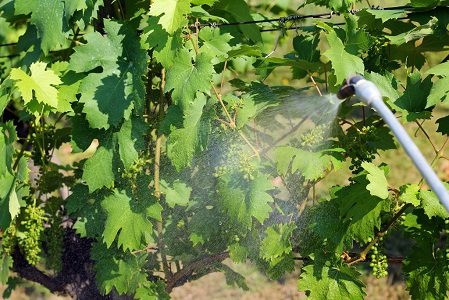

Foliar dressing of grapes
Grape leaves absorb nutrients dissolved in water well. Therefore, in addition to the usual root dressing, it is recommended to carry out foliar dressing - by leaf mass.
Sugar or glycerin is added to the solution for spraying with mineral fertilizers, 3 tablespoons each, this will allow the nutrient solution to evaporate from the leaves more slowly and improve the quality of absorption of nutrients. Spraying is carried out on dry leaves.
Foliar dressing, if necessary, is combined with disease prevention. In this case, the grapes will receive nutrients and medicinal substances.
The first spraying with fertilizers containing phosphorus is carried out two weeks before the buds are laid. This is necessary to feed the plant at the time of the formation of the ovary.
Foliar dressing is carried out 3 more times, each time reducing the amount of phosphorus:
- After the formation of inflorescences.
- Before ripening berries.
- When preparing grapes for wintering.
The effectiveness of this action significantly increases the yield, sugar content, and quality of grapes.
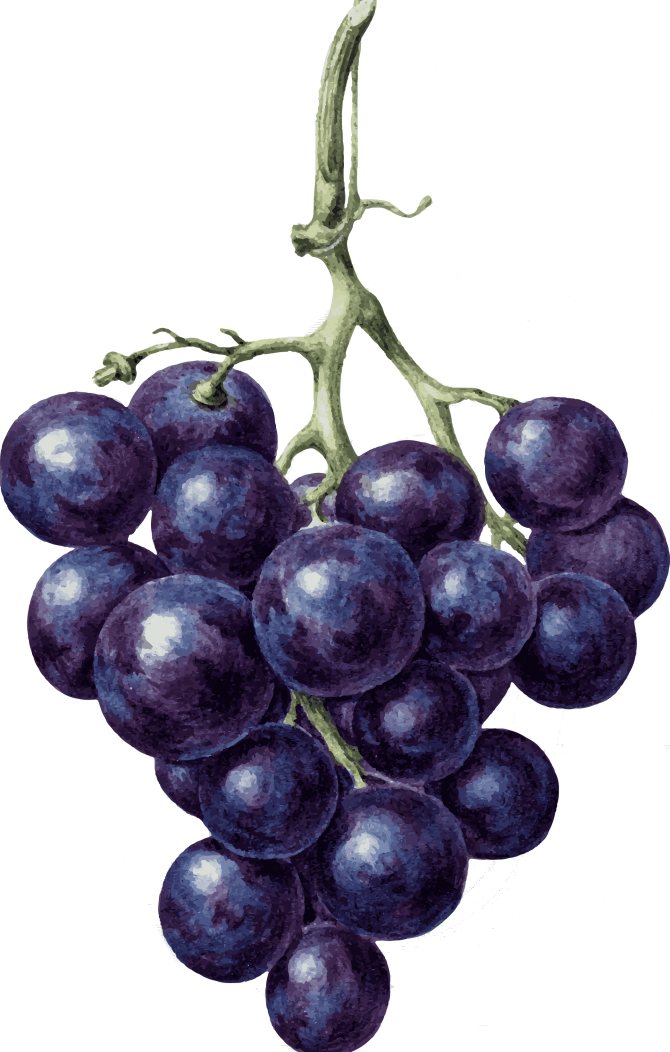

Important! Top dressing is recommended in the evening so that the sun does not burn the foliage.
Beneficial Nutrients for Grape Growth
For effective growth of grapes, special substances are required. There are a lot of them and each is characterized by its own advantages, features, as well as a characteristic positive effect on plant growth. Among them are such important tools as:
- Preparations containing nitrogen that will help build up green mass. The component is best applied strictly in early spring, at a time when there is active growth of shoots and leaves are forming. Adding the substance at the end of the season is categorically contraindicated, since the active growth of shoots will not allow fruits to develop;
- Grapes should be fertilized with a substance that contains phosphorus, especially during flowering. This substance will help the inflorescences develop better, it also helps the ovaries and berries to form. The most optimal phosphorus-containing agent is superphosphate;
- In the fall, grapes need to be fertilized with potassium. Such a feeding method is able to ensure the fastest ripening of shoots and berries. This substance increases the plant's resistance to low temperatures;
- Copper is able to provide a plant with resistance not only to low temperatures, but also to drought;
- Boric acid is used to increase the sugar content of fruits. This substance is an ideal stimulant for pollen germination;
- Zinc is also an important trace mineral that can increase the overall fertility of berries.
Read also: Cabbage Centurion f1: description of the variety, terms and rules of planting, disease prevention, reviews of gardeners
In addition to all of the above components, grapes still need such important substances as magnesium, iron, sulfur and calcium.
Watering
Freezing of shoots is very often observed in winter. This is due to insufficient moisture accumulation in the tissues of the vine. Therefore, it is necessary to water abundantly, or "charge" the vineyard in October - at least 50 liters of water for each bush. Such a charge of moisture guarantees a good entry into the winter, and will help to easily endure the cold period.
Growers often bury pipes in the soil around the bushes, and pour water directly into them. With this method of watering, the liquid does not spread, but goes directly to the roots of the plant.
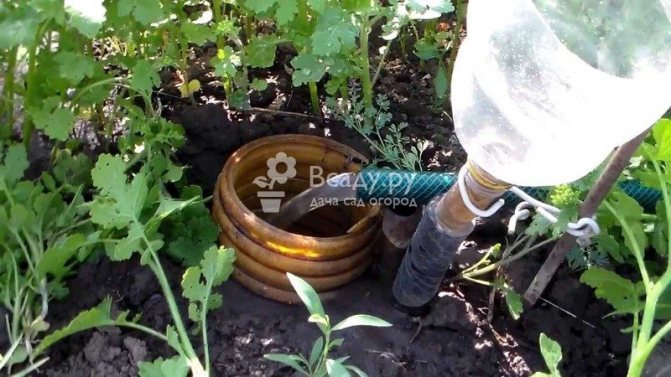

Watering grapes in autumn through special drainages
Output
Many people often ask themselves how to feed their grapes in autumn and spring. Indeed, for normal development, the plant needs nitrogen, copper, potassium and phosphorus, and in the soil these elements are often lacking. Fertilizers will help the gardener solve this problem. It is advisable for a beginner winemaker to purchase multi-component mixtures that contain all the necessary substances. How to properly handle this culture:
- When the temperature becomes positive, you need to fertilize the soil in a dry form.
- When the first leaves begin to appear on the plant, add nutrients to the soil in the form of an aqueous solution.
- Water the ground again after flowering.
- The last time you need to add nutrients is after harvesting.
Remember that nitrogen should not be added in the fall - this element prevents the wood from ripening.
Processing foliar components of grapes (leaves, vines) also makes sense. Prepare an aqueous solution of beneficial trace elements, and then spray them on the plant. This should be done at night or in cloudy weather.
Essential minerals for plant growth
Important! For the full growth of grapes, such minerals are required, which are included in the chemical composition of its berries. What these substances are and when to use them, we will describe further.
How to fertilize: nitrogen, potassium, calcium, magnesium, phosphorus, zinc, boron, copper and many others. These substances are contained in chemical and organic fertilizers.
Let's consider what substances are needed for the quality development and ripening of grapes and where to look for them:
Nitrogen - for active plant growth:
- They contain such organic compounds as all types of manure, poultry, duck, chicken and pigeon droppings, vermicompost.
- Mineral fertilizers containing nitrogen are urea (carbamide), ammonium sulfate, sodium, potassium, calcium and ammonium nitrate.
Potassium - for full-fledged ripening of fruits, helps the plant to prepare for wintering.
- Part of ash, slurry and sludge.
- Mineral potassium fertilizers: potassium nitrate, potassium sulfate, potassium magnesium, potassium salt.
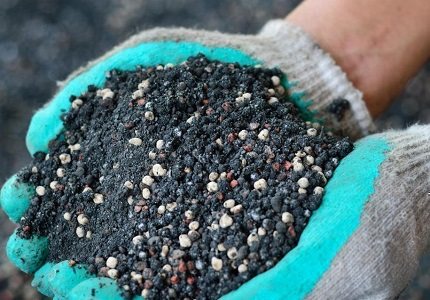

Fertilizers for grapes
Phosphorus - for active flowering, fruiting and ripening of berries.
- Contained in bone and fish bone meal, manure and poultry droppings.
- Phosphorus-containing mineral fertilizers: Ammophos, single and double superphosphate, sulfoammophos, nitrophoska.
Boron - accelerates the ripening process of grapes, increases the sugar content of the fruit. It can be applied as a fertilizer for grapes in the form of boric acid.
Calcium is needed for good growth of the vine and root system. It is found in large quantities in bone meal and in mineral fertilizers such as calcium nitrate, Kalbit C, Brexil Ca, Vuksal calcium.
What useful trace elements should the soil contain?
Grapes not only need warm temperatures and sunshine, but also nutrients in the soil. Unfortunately, humus is formed in the soil rather slowly. In order not to lose a good harvest, the gardener will have to add additional nutrients to the soil. Negative Effects of Nutrient Deficiencies:
- The leaves turn yellow and fall off.
- Shoots become very fragile.
- The plant's immunity decreases, which leads to the appearance of a large number of various diseases.
- The brushes are not tied, so there is no need to wait for the harvest.
Many people mistakenly believe that the use of complex mixtures can solve the problems associated with plant nutrition. However, this is not entirely true - the vegetation stage directly depends on the plant's need for nutrients. This means that at each stage of life, a plant needs a different amount of useful microelements. Therefore, every gardener should know what substances are needed for the normal growth and development of this crop:
- Nitrogen. This element is responsible for the growth of leaves and shoots, therefore, it is introduced into the soil in the spring.It is harmful to introduce this element into the soil in the fall - the fact is that in the fall the wood must ripen, and large doses of nitrogen in the ground can interfere with this process.
- Phosphorus. This element is a part of inflorescences and berries, so phosphorus is usually applied in spring. However, some gardeners fertilize the soil with phosphorus in late autumn so that the plant can successfully overwinter.
- Potassium. Potash fertilizers based on potassium chloride are extremely useful in autumn, as this element strengthens the vine, which is very important for wintering.
- Copper. Small doses of copper are fed by gardeners in late spring and autumn, since copper helps to survive high and low temperatures.
These substances are found in various fertilizers. They are single-component (contain only one useful trace element) and multicomponent (contain a mixture of useful trace elements). You can also often find fertilizers in combination with organic matter. We will now find out what fertilizers for grapes need to be applied to the soil.
Shelter of the vineyard for the winter
For the winter shelter of the vineyard, spruce branches are used, which pounce on the vine bent to the ground. Agrofibre is thrown over the top, the edges of which are fixed. The ends of the shelter are not closed - this ensures good ventilation, and the vine is protected from condensation and evaporation. If spruce branches are not at hand, then the lashes can be covered with boxes, and dry foliage can be sprinkled on top.
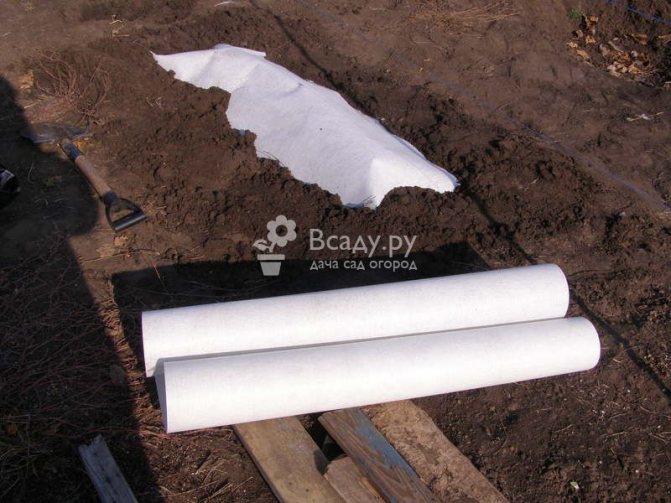

Shelter grapes for the winter with agrofibre
For many northern regions, October is the month of completion of work on the vineyard, and further maintenance of the bushes is reduced to checking the shelter and trapping snow around it.
Main seasons for top dressing
Basically, fertilizers are introduced into the ground in the spring with the onset of the growing season, when sap flow begins, and the buds have not yet blossomed. In the summer, the plant also needs additional nutrition. But at this time, foliar fertilizers are mainly used, sprayed, if necessary, along the crown of the bush. Autumn is an important season in horticulture. It is at this time of the year that the grapes receive their main food. Good feeding helps the plant not only survive the cold season, but also promotes high-quality maturation of the wood.
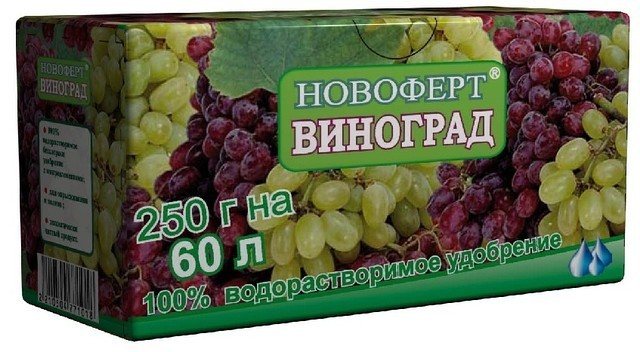

It would seem that all the trees and shrubs are sleeping in winter, and there is no reason to fertilize the grapes the day before. This is mainly the thinking of novice gardeners. But such a mistake will affect in the spring, and when the time comes to harvest. Indeed, in order for the shrubs to winter well, they need additional warmth, and with the onset of heat, nutrients will begin their work.
When is it better to feed grapes
The first feeding of the grapes must be done before the winter ends. In early spring, when all the snow has melted, the procedure should be carried out immediately so that the plant has good nutrition at the beginning of flowering. The next time feeding is recommended in May to help the grapes grow greenery.
For the third time, the procedure should take place around mid-July. Top dressing is needed so that the appearance and taste of the fruits come out good.
And last but not least, the feeding stage falls in the fall, when the harvest is over. Fertilizing grapes in the fall is necessary so that it does not lose its resistance to the approaching frost, as well as for additional nutrition before a long wintering.
Summing up
Simultaneously with root feeding, foliar should be carried out. This is guaranteed to increase the overall yield of the grapes, as well as the resistance of the bushes to various diseases. Competently carried out foliar feeding should be carried out using special solutions of macro- and micronutrient fertilizers. You can buy them inexpensively in a specialized store.
All types of fertilizers should be applied on calm days, in the morning or evening. In this way, burning of the leaves can be avoided. In order for the leaves to better absorb all the useful components, it is enough to add three tablespoons of sugar to the solution. If you adhere to all the rules for fertilizing, this is the only way you can grow healthy vines and get a bountiful harvest with tasty fruits.
Fertilizers and dosage
All possible fertilizers for grapes can be divided into two main groups: organic and mineral nutritional compositions. Each of them has its own specific effect on the plant organism, therefore it is so important to immediately take into account the characteristics of a particular mixture.
Organic
Organic fertilizers contain residues of decomposed substances and are often presented in the form of manure, compost, green manure residues and shredded waste used as mulch:
- Manure (usually cow). The mineral components present in it increase the immunity of grapes in terms of resistance to diseases and contribute to the formation of tasty fruits, and the organic part of the composition improves the mechanical qualities of the substrate, due to which it becomes friable and excellent air permeability.
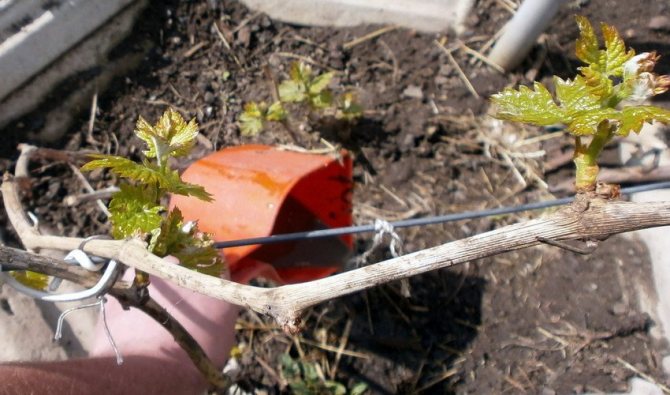

- Humus (compost). It has a beneficial effect on the structure of the soil, but to increase the effectiveness of its use, it is worth mixing the substance with straw or manure, which will make the composition of the fertilizer more balanced. This top dressing is suitable for grapes in any type of substrate.
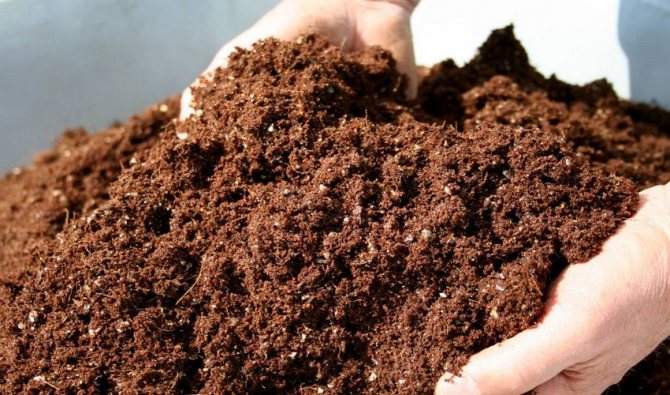

- Green manure plants. They are used only in regions with high humidity, since they can take away the moisture it needs from the crop. Usually, low-growing vegetation is planted in vineyards, at least 50-60 cm away from the bush. These can be legumes (for example, peas, vetch or lupine), which, when digging the soil, will decompose and enrich the substrate with useful organic substances.
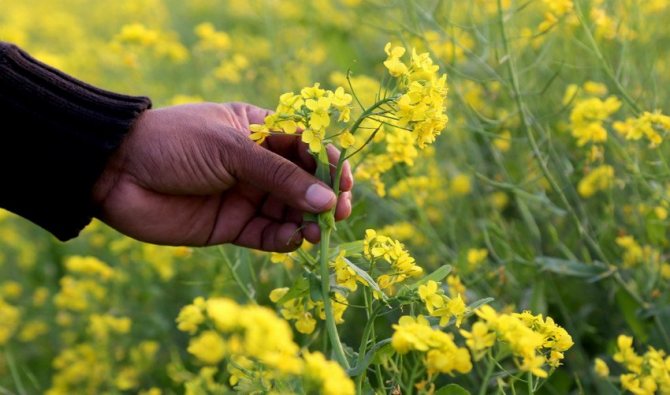

- Shredded food waste mulch (for example, cake from a juicer) that are already under the influence of microorganisms. First, the surface of the soil near the plant is covered with small food residues, and larger vegetation is laid on top in the form of dead branches, vines and leaves. At the end of the mulching procedure, you can cover everything with straw. Most often, feeding grapes in this way is performed only when planting young cuttings in order to simultaneously protect them from winter frosts and possible diseases.
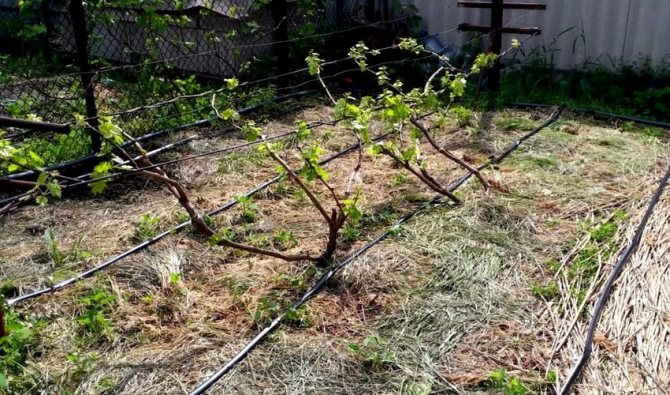

To use each option, it is worth choosing the most suitable time for this, because at different stages of development, grapes need different nutrients.
It will also be helpful for you to learn how and how often to water the grapes in the summer.
Mineral
Mineral dressings are often sold in the form of ready-made mixtures designed to accelerate the ripening of berries and strengthen the immunity of grapes after various manipulations with it.
Among the important micro and macro elements in this case, it is worth highlighting:
- Nitrogen - increases the rate of protein formation in grape cells, which means that the vegetative parts of the plant will develop much faster than without fertilization. Nitrogen-containing mixtures are best used in spring, during the intensive formation of green mass on the vine. To saturate the soil with nitrogen, gardeners usually choose ammonium nitrate and urea.
- Potassium - ensures the rapid development and ripening of grape fruits, which is explained by the accumulation of sugars and increased metabolic processes within the culture. In addition, she needs potassium in preparation for the winter cold, therefore, in this case, it is worth using potassium chloride.
- Magnesium - one of the essential components for the selection of chlorophyll by grapes, which plays a primary role in the process of photosynthesis of green leaves.Deficiency of this element leads to yellowing and eventual death of the leaves.
- Phosphorus - it is necessary during the formation of inflorescences and ovaries, therefore superphosphates must be applied immediately before the beginning of the flowering period of grapes.
- Calcium - takes an active part in the formation of a strong root system, therefore it is indispensable for young seedlings.
- Boron - increases the sweetness of grape fruits and accelerates their ripening. It is usually introduced into the soil in the form of boric acid.
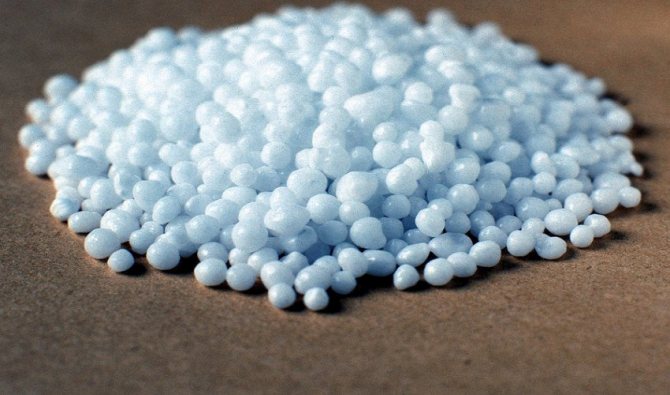

Based on the amount of mineral components present in the fertilizer, all such dressings can be divided into simple, complex and complex:
- the first group usually includes potassium chloride, urea and superphosphate;
- the second is attributed to drugs with two active micro- or macrocomponents (can be prepared by combining two simple substances);
- the third includes both macro- and microelements, and the number of such components is not limited.
Important! Chlorine is very harmful to grapes, so wood ash can be used as an acceptable alternative.
So, in addition to nitrogen, potassium and phosphorus in the latter case, boron, manganese, sulfur, magnesium and iron are usually used, and their ratio is so balanced that it allows grapes to be saturated exactly in the amount that it needs. Observing the requirements for the dosage of complex fertilizers, there is no need to worry about the oversaturation of the soil with nutrients.
Folk remedies
Those who do not want to use chemicals for feeding grapes should pay attention to folk recipes for making fertilizers.
In this case, the key elements of such compositions will be:
- Ash - contains potassium, calcium, phosphorus, as well as some trace elements that will be useful to the plant both in its own form and in combination with superphosphate. Ash will be especially valuable on acidic soils, although on neutral soils it can bring a lot of benefits, especially since for the good effectiveness of this substance, it is enough just to scatter it around grape bushes or mix it with water and use it to spray crop leaves.


- Eggshell - an excellent source of calcium, magnesium and phosphorus, which the root system of plants needs so much. All these elements easily dissolve in the substrate and are absorbed by the roots in almost complete form. In addition to this, such a product increases the fertility of the soil and makes it alkaline. However, for the preparation of a suitable nutrient fertilizer, it is advisable to use the shells of raw eggs, which did not have time to lose some of their beneficial properties during heat treatment. To begin with, you need to rinse it well under running water, dry it in the oven and grind it thoroughly, you can until the state of flour. The resulting powder is used according to the principle of ash (scattered under bushes or powdered plants), and also added to other organic or mineral nutrient compositions.
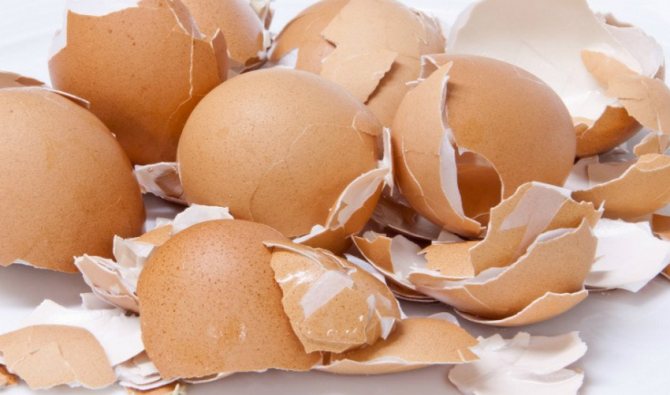

- Yeast - a good regulator of the state of soil microflora. Baking varieties are best suited for fertilizing grapes, which, after stirring in warm water (100 g per 1 bucket of water), are first left overnight, and then the mixture is used to water the grape bush. In this case, at least 2 liters of such fertilizer is consumed per 1 adult plant.
